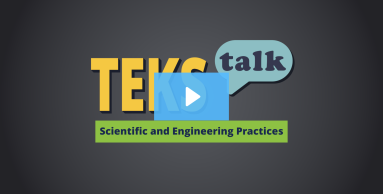- Science
- Grade 7
- Scientific and engineering practices
Science.7.2.A

Knowledge and Skills Statement
The further explanation is designed to be a resource for educators that helps them better understand the topic their students are learning. Further explanations may be written at a more complex level than would be expected for students at the grade level.
All models have strengths and weaknesses; understanding those limitations helps scientists and engineers select the most appropriate model. The advantages of models may include seeing something that would otherwise be too big (the solar system) or too small (bacteria), manipulating the parts to see how they work together, and using less expensive or easier to find materials to build it. Disadvantages of models may include not being completely accurate about the phenomena the model represents.
Teachers may use a Plus, Minus, Delta chart or some other form of graphic organizer to help students think about and discuss strengths and weaknesses of models.
Research
Bielik, Tom, Sebastian T. Opitz, and Ann M. Novak. "Supporting Students in Building and Using Models: Development on the Quality and Complexity Dimensions" Education Sciences 8, no. 3 (2018): 149. https://doi.org/10.3390/educsci8030149
Summary: Past research has identified elements underlying modeling as a core science and engineering practice, as well as dimensions along which students’ learn how to use models and how they perceive the nature of modeling. To extend these findings by a perspective on how modeling practice can be used in classrooms, we used design-based research to investigate how the modeling practice elements, i.e., construct, use, evaluate, and revise, were integrated in a middle school unit about water quality that included using an online modeling tool. Students constructed, used, evaluated, and revised their models based on data they collected and concepts they learned. Results indicate most students succeeded in constructing complex models using the modeling tool by consecutively adding and specifying variables and relationships. We discuss implications for applying modeling practice in classrooms and explain how students make use of the different modeling practice elements by developing their models in the complexity and quality dimensions.
